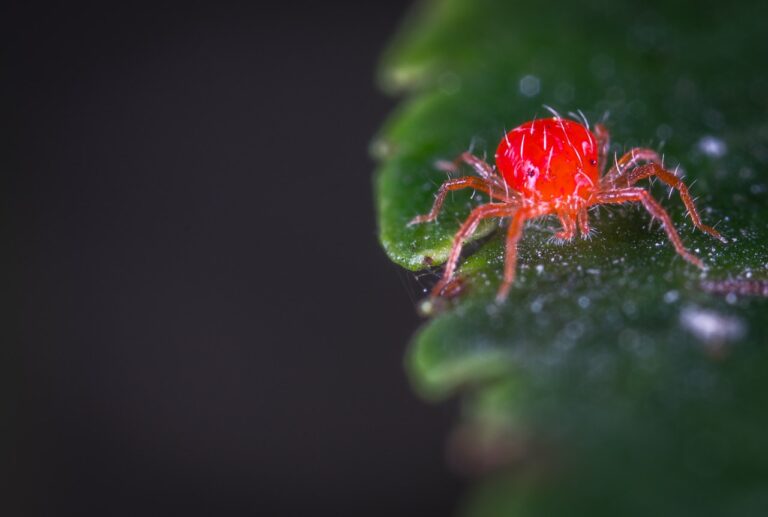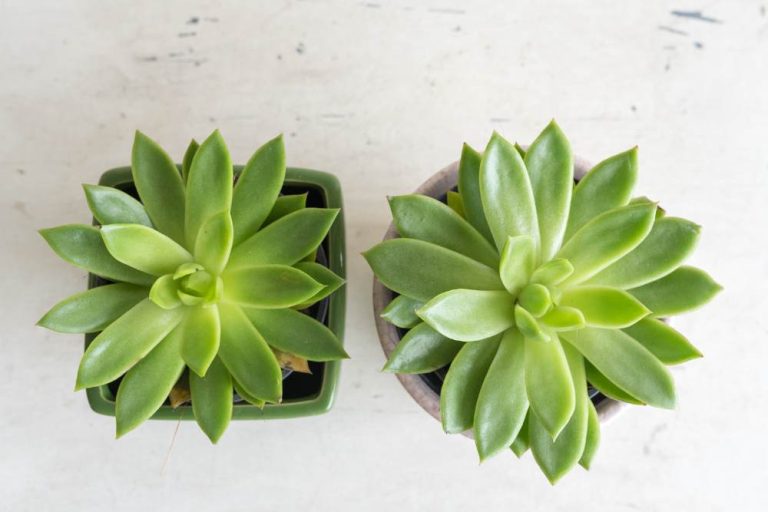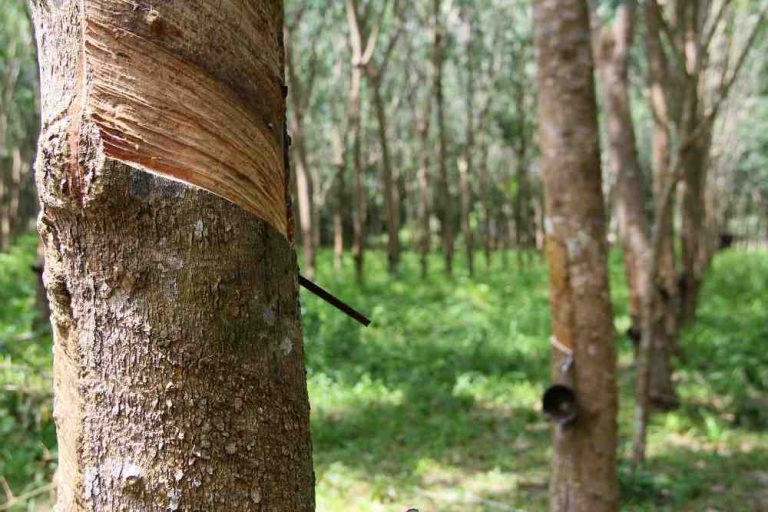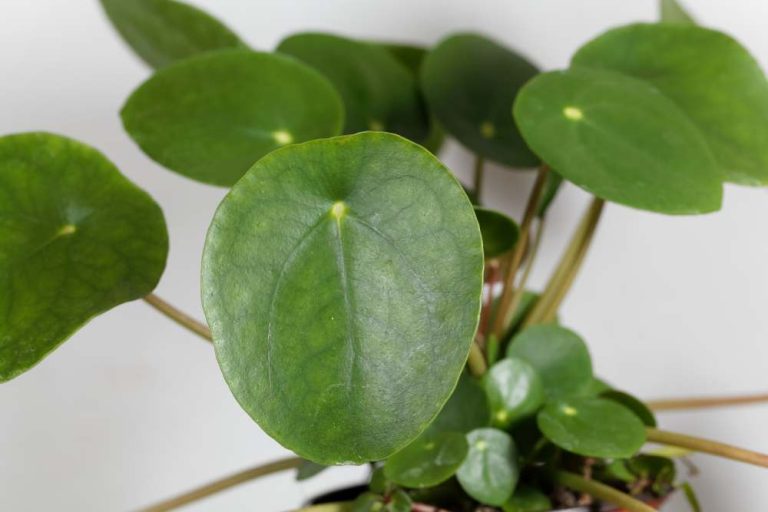Understanding and Controlling Thrips in Agriculture
Thrips (Thysanoptera) are very small, cigar-shaped insects widespread throughout the world belonging to the order Thysanoptera. The fringed wings found on adult stages in this order, wings are narrow, small, and surrounded by tiny hairs.
Thrips are one of the smallest orders of insects therefore they are difficult to see with the unaided eye, with adults averaging between 0.5-1.5 mm. The correct identification of species and the level can be made with the help of an expert or only under magnification. Thrips’ colors range from pale yellow to black. Some predaceous species are brightly colored.
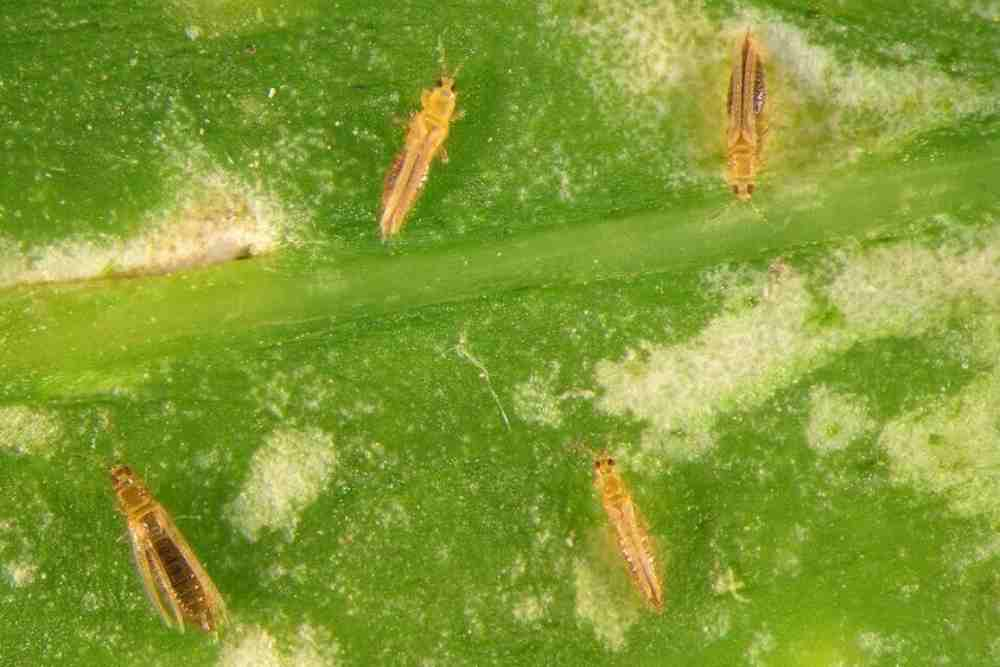
Thrips are a major pest species that damage ornamental plants. They cause damage through their sucking mouthparts used to consume plant sap. Thrips are difficult to manage because they develop quickly and many species of them can complete a generation in 2 weeks.
About 50% of the known thrips species of Thysanoptera feed on fungi, nearly 40% of species feed on living tissues of dicotyledonous plants or grasses, and the remaining species feed on mosses, gymnosperms, ferns, cycads, or are predatory.
Thrips Life Cycle
The typical life cycle of thrips includes four stages: an egg stage, followed by two larval stages, two pupal stages, and finally the adult stage. Thrips show reproduction without mating called parthenogenesis.
Hence both mated and unmated females can lay eggs. Their eggs are minute, white, and kidney-shaped, of most plant-feeding thrips are inserted into plant tissue by the females. The larval stages actively feed on plant material and larvae generally resemble the adults but are wingless.
During their life cycle, their wing buds are visible during the pre-pupal stages. The pupal stages are resting stages and do not feed, which can be identified by wing pads and antennae that are folded over their heads.
The pupal stage of thrips may be found on the plant, under leaf litter, and in the soil. Since the life cycle can be completed in about two weeks under favorable conditions thus several generations may occur in a year. During spring and early summer thrips, populations generally peak.
Thrips Damage
Unlike those of most insects, the mouthparts of thrips are unique to their family and asymmetrical. Their feeding mechanism may be described as “punching and sucking,” because through this mechanism the plant surface is rubbed to break the surface and the exuding sap is sucked up.
Some thrips species inject digestive enzymes into the wound. This causes bronze or silver-colored speckles on the surface of the plant parts and small black specks of excrement may also be seen on the affected parts. Some thrips species excrete honeydew, which favors the growth of black sooty mold on infected plants.
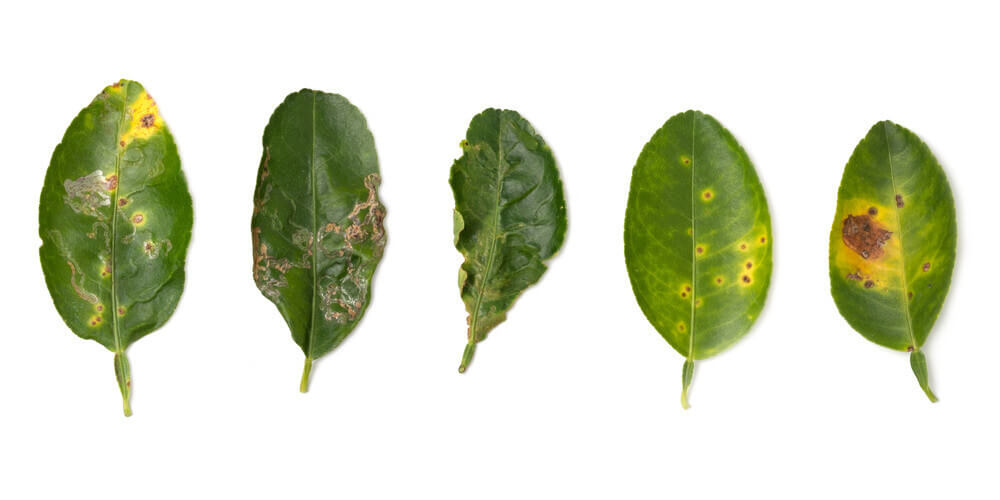
The type of damage done by thrips is differed by species, but they can affect all the above-ground surfaces of their plant hosts, including leaves, plant shoots, flowers, flower buds, and fruits.
Thrips damage may produce one or more of the following symptoms in infected plants: discoloring (silvering, darkening) of the leaf surface, stippled leaves, and fruits, scarred petals, brown frass markings on the leaves and fruits, linear thickenings of the leaf lamina, curled and distorted leaves/terminals, grey to black markings on fruits, often forming a conspicuous ring of scarred tissue around the apex, distorted or scabby fruits early senescence of leaves and stunted growth of the host, causing dwarfing or stunting.
Thrips Management
The correct identification of the species is necessary to properly manage the pest. Thrips species can occur on various host plants but sometimes may not cause significant damage to plants and treatment may not be necessary. Regular scouting is essential to detect thrips incidence and avoid economic damage in your field.
Thrips’ presence on the plant and in the greenhouse or nursery can be detected by randomly placing blue or yellow sticky trap cards near plants or by tapping plant materials over a white sheet of paper.
Thrips count on the sticky trap can be an indicator of the direction of the thrips incidence and is also effective in the control measures applied. When scouting reports that thrips population density reaches levels where experience indicates action should be taken growers should apply insecticides.
Density levels requiring treatment vary based on the type of crop, source(s) of infestation, history of viral infection, and environmental conditions. Extension personnel can also provide help and advice to determine when the grower should apply insecticide.
As cultural practices, it is important to avoid planting susceptible plants next to infected areas and control nearby weeds that are alternate hosts of pest thrips. Grow plants that are well-adapted to conditions at that site thus plants adapted to grow in full sun can be stressed when they are planted in shady conditions and may be more susceptible to thrips damage.
To keep plants vigorous and increase their tolerance to thrips damage it needs to provide appropriate cultural care. Always keep plants well-irrigated also avoid excessive applications of nitrogen fertilizer as may promote higher populations of thrips.
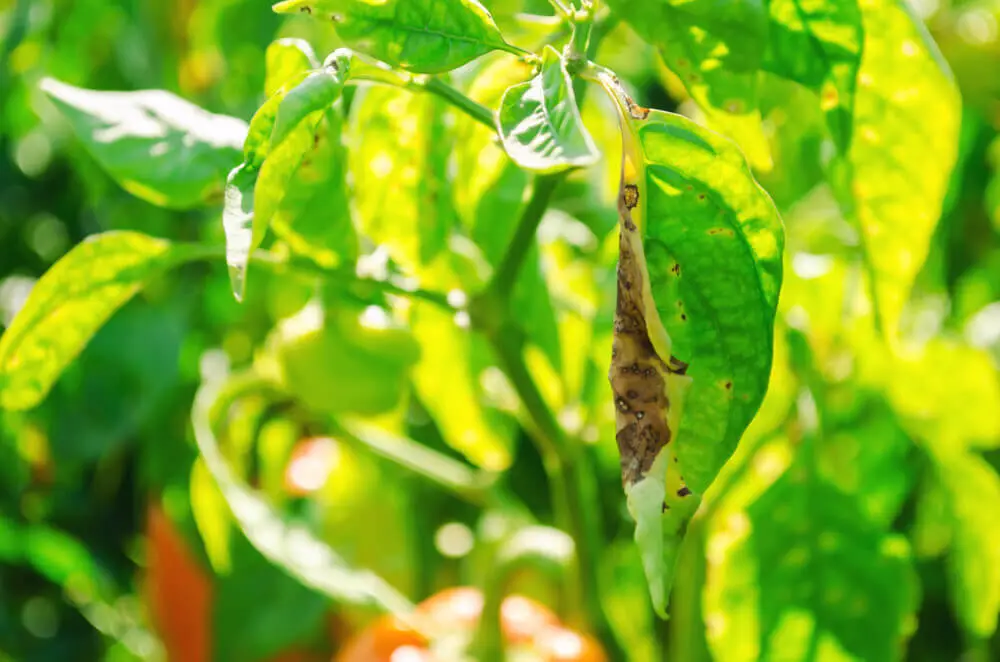
Old, spent flowers can harbor thrips therefore their removal and disposal are sometimes recommended, and sometimes old blossoms also commonly shelter beneficial predators of thrips. Investigate the availability of resistant cultivars. Any type of covering that allows light and air penetration but excludes insects can be used to control thrips.
Apply row covers before crops emerge or pest-free plants during planting as plants are normally covered or caged only while young and most susceptible to damage. Covers should be removed to provide enough growing space and to prevent overheating, once plants become larger or temperatures get warmer. Drip or furrow irrigation is generally used when using row covers.
It is important to understand that chemical control often becomes necessary in severe infestations because thrips are difficult to control due to several reasons. Thrips are difficult to control effectively with insecticides, because of their mobility, feeding behavior, and protected egg and pupal stages.
Since they are very small in size, they can hide in places that cannot be reached by pesticides. Systemic insecticides also have limitations, as they may not reach the growing points of plants (tender leaves and buds) where the thrips feed.
Continuous exposure to insecticides causes the development of resistance in thrips. Hence, the type of insecticides and application methods of these insecticides should be made after considering these points.
Insecticides should be used sparingly if the natural enemy populations are high and the damage is tolerable. Contact your agriculture officer for specific recommendations. Choose insecticides labeled for use against thrips and for application on the host plant and follow particularly safety precautions, and all directions on insecticide labels.
- 15 Ingenious Kitchen Garden Ideas to Cultivate Freshness Right at Home - April 7, 2024
- 10 Top Picks Best Plants for Open Terrarium - April 2, 2024
- 21 Easy and Cheap Walkway Ideas for a Charming Garden - March 31, 2024


